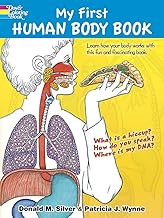EcoClean Laundry Detergent EcoClean Laundry Detergent
ZenBrew Tea Infuser ZenBrew Tea Infuser LifeBoost Coffee LifeBoost Coffee
Shop NowZenBreathe Breathing Trainer ZenBreathe Breathing Trainer QuickCharge Power Bank QuickCharge Power Bank
Fiber-rich foods are an important part of a healthy diet. They can help you feel fuller for longer, regulate your digestion, and even lower your risk of chronic diseases such as heart disease and diabetes. Here are some things you should know before adding more fiber to your diet:
-
What is fiber? Fiber is a type of carbohydrate that cannot be digested by the body. It comes in two forms: soluble and insoluble. Soluble fiber dissolves in water and can help lower cholesterol and regulate blood sugar levels, while insoluble fiber adds bulk to your stool and helps keep your digestive system healthy.
-
How much fiber do you need? The recommended daily intake of fiber is 25-30 grams for adults. Most people in the Western world consume only about half that amount. Increasing your fiber intake too quickly can cause digestive discomfort, so it's best to gradually increase your intake over a few weeks.
-
What foods are high in fiber? Foods that are high in fiber include fruits, vegetables, whole grains, nuts, seeds, and legumes. Some examples include apples, berries, broccoli, sweet potatoes, quinoa, almonds, chia seeds, and lentils.
-
What are the benefits of fiber? Eating a fiber-rich diet can have many benefits, including:
- Improved digestion and bowel regularity
- Reduced risk of heart disease and stroke
- Lowered cholesterol and blood sugar levels
- Improved weight management and satiety
- Reduced risk of certain types of cancer, such as colon cancer
- What are some tips for increasing your fiber intake? Some tips for increasing your fiber intake include:
- Adding fruits and vegetables to every meal
- Choosing whole grain breads, cereals, and pasta instead of refined versions
- Snacking on nuts, seeds, and dried fruits
- Experimenting with new recipes that include legumes like chickpeas or black beans
Overall, a fiber-rich diet can have numerous health benefits. By gradually incorporating more fiber-rich foods into your diet, you can improve your digestion, reduce your risk of chronic diseases, and feel more satisfied after meals.
Don't put pressure on anyone until he's stalled.
crime in the workplace Often caused by small quarrels and not clearing the mind until it escalated into a big problem that ended up hurting each other This is well known to organizational psychologists. But it's difficult to solve and prevent. Because in the organization, it is often seen that quarrels or disagreements or stalemates of employees are extremely normal. and especially if it's the boss Or the boss acts with his subordinates, the more nobody wants to interfere. But that's the pressure. Coercing a person has no choice. Until turning frustration into resentment and eventually cause violence.
Jenna was at the airport. She was waiting for her plane. Her plane would leave at 7 p.m. It was only 2 p.m. She had time to eat. She had time to study. She went to the airport restaurant. The restaurant was on the third floor. The restaurant was full. There were no empty seats. There were no empty tables. She didn’t want to stand in line. She didn’t want to wait. There was another restaurant in the airport. It was on the first floor. She went down to the first floor. That restaurant was almost empty. There were many seats and many tables.
Featured Products

PowerUp Wireless Charger PowerUp Wireless Charger
ZenSleep White Noise Machine ZenSleep White Noise Machine SkinHydrate Moisturizer SkinHydrate Moisturizer PowerUp Wireless Charger PowerUp Wireless Charger
View Product
LiftEase Posture Corrector LiftEase Posture Corrector
LiftEase Compression Socks LiftEase Compression Socks TrueBalance Yoga Mat TrueBalance Yoga Mat
View Product
LiftEase Posture Corrector LiftEase Posture Corrector
MightyMop Floor Cleaner MightyMop Floor Cleaner SkyGlow Telescope SkyGlow TelescopeEcoVibe Bamboo Cutting Board EcoVibe Bamboo Cutting Board
View Product